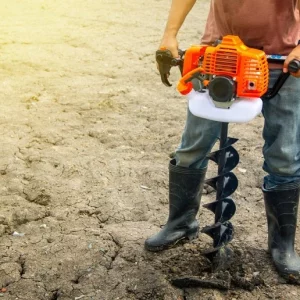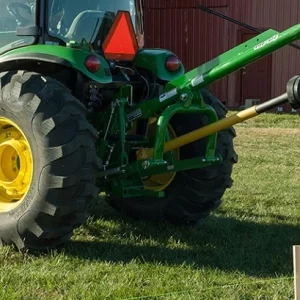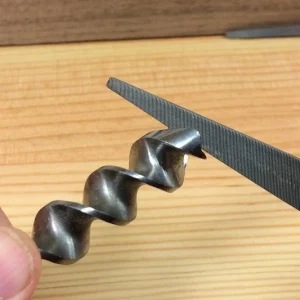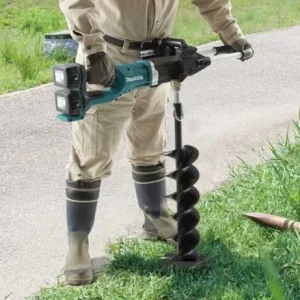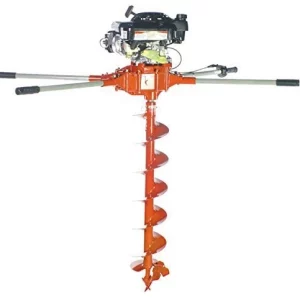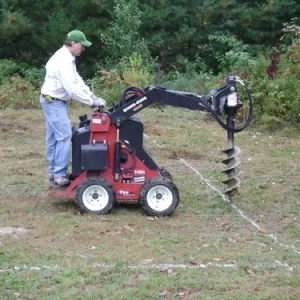When it comes to digging, drilling, or making holes in the ground, terms like “auger” and “bore” often crop up. But, what do they really mean, and how do they differ? The age-old debate is about to be settled once and for all. So, gear up as we dive into the intricate details of these two intriguing earth-working processes.
Digging deep into the subject (pun intended!), an auger is a tool or machine that bores holes in the ground, typically using a rotating helical screw blade. On the flip side, “boring” refers to the process of making a hole or tunnel, especially in the ground, using a drill or excavation equipment. Here is a detailed comparison: Boring is a broader term encompassing various methods to create holes. It can be done using different tools, from simple handheld drills to advanced tunnel boring machines. The depth, diameter, and purpose of the hole will dictate the method used.What Is the Difference Between Auger and Bore?
Aspect
Auger
Bore
Method
Rotating tool that drills into the ground
Method of creating a hole in the ground
Application
Smaller diameter holes
Larger diameter holes
Equipment
Auger attachment on machinery
Auger boring machine or drilling rig
Hole Stability
Less stable due to smaller diameter
More stable due to larger diameter
Ground Displacement
More displacement of soil
Less displacement of soil
Precision
Less precise
More precise
Applications
Landscaping, fencing, small utilities
Large utilities, pipelines, roadways
Technical Aspects of Auger
metals, to ensure durability and resistance to wear during drilling.Technical Aspects of Boring
Practical Applications of Augers
- Construction: Augers are used for drilling holes in construction projects, such as for foundation piers, utility poles, and fence posts.
- Agriculture: Augers play a crucial role in agriculture for planting crops, installing irrigation systems, and creating holes for fence posts.
- Mining: Augers are utilized in mining operations to extract minerals, coal, and other resources from the ground.
- Environmental Sampling: Environmental professionals use augers to collect soil and water samples for analysis, helping assess pollution levels and site contamination.
- Geotechnical Investigations: Augers aid in soil sampling and geotechnical investigations, helping engineers understand soil composition and stability for construction projects.
- Waste Management: Augers are used in waste management to dig boreholes for landfill sites and monitor waste decomposition.
- Oil and Gas: Augers are employed in oil and gas drilling operations to extract core samples for analysis and assess potential reserves.
- Exploration: In scientific research, augers are used to collect sediment samples from the ocean floor, lake beds, and other geological formations.
- Water Well Drilling: Augers are used to drill water wells for residential, agricultural, and industrial water supply.
- Snow Removal: Augers are utilized in snow blowers and snow removal equipment to efficiently clear snow from driveways and walkways.
Practical Applications of Boring
- Machine Manufacturing: Boring is vital for creating accurately sized and aligned holes in engine cylinders, gearbox housings, and other machinery components.
- Automotive Industry: Boring is used to produce precise cylinder bores in engine blocks, ensuring optimal performance and reducing friction.
- Aerospace Industry: Boring is applied to aircraft engine components, ensuring tight tolerances and reliable performance.
- Metalworking: Boring achieves precise internal diameters in metal parts, such as bearings, bushings, and couplings.
- Tool and Die Making: Boring is employed in producing molds, dies, and tooling with accurate internal features.
- Heavy Equipment Manufacturing: Boring helps in creating precise bores for pivot points and linkages in heavy equipment.
- Hydraulics and Pneumatics: Boring ensures proper fit and function of hydraulic and pneumatic components.
- Industrial Repair and Maintenance: Boring is used to restore worn-out or damaged components to their original dimensions.
Safety Protocols with Augers
- Secure Base: Entrench the auger on solid ground to prevent instability and overbalancing.
- Personal Protective Equipment (PPE): Wear appropriate PPE, including gloves, safety glasses, and hearing protection.
- Inspect Equipment: Regularly check the auger and its components for damage or wear before use.
- Safe Operation: Follow manufacturer’s instructions for safe operation, including speed and depth limitations.
- Avoid Loose Clothing: Wear fitted clothing to prevent it from getting caught in the rotating parts.
- Keep Distance: Maintain a safe distance from the rotating parts and the hole being dug.
- Communication: Establish clear communication with the equipment operator and other workers.
- Emergency Stop: Know the location of the emergency stop button and how to use it.
Safety Protocols with Boring
- Safety Equipment: Ensure all personnel wear appropriate PPE, including helmets, safety glasses, and hearing protection.
- Proper Training: Workers should be adequately trained to operate and handle the boring equipment.
Secure Work Area: Clear the work area of obstructions and ensure proper signage for safety zones. - Equipment Inspection: Regularly inspect the boring equipment for any defects or malfunctions.
- Communication: Maintain clear communication among team members during the boring process.
- Emergency Procedures: Have well-defined emergency procedures in place and ensure everyone knows how to react.
- Proper Ventilation: In enclosed spaces, ensure proper ventilation to prevent harmful fumes accumulation.
- Risk Assessment: Conduct a thorough risk assessment before beginning any boring operation.
Cost Implications of Using Augers
While augers can be cost-effective for smaller tasks, larger projects might require more significant investment in machinery and manpower. It’s a balancing act of cost versus efficiency.
Cost Implications of Using Boring Machines
High-end boring machines don’t come cheap! Investing in boring can be a hefty expense, especially for large-scale operations. However, the efficiency and precision they offer often justify the price tag. Regular maintenance is crucial for extending the lifespan of augers. Proper cleaning and storage after each use, as well as routine checks for wear and tear, can significantly prolong their operational life. Boring machines, due to their complexity, demand rigorous maintenance. Adhering to manufacturer guidelines, conducting regular checks, and promptly addressing repairs are essential for ensuring the longevity of these machines. Modern augers are a far cry from their ancient counterparts. From power augers to those with specialized drill bits, innovation in this space has been continuous and commendable. Tunnel boring machines with advanced sensors, real-time data monitoring, and AI integration represent the cutting-edge in boring technology. The future looks even more exciting! Depending on the task at hand, one may be more suitable than the other. By weighing the pros and cons, costs, and specific requirements, one can make an informed choice. Also, Read: Do Augers Needs Sharpening?Maintenance and Longevity of Augers
Maintenance and Longevity of Boring Machines
Innovations in Auger Technology
Innovations in Boring Technology
Choosing Between Auger and Boring
FAQs on Difference Between Auger and Bore
While both are tools used to create holes, an auger typically uses a rotating helical screw blade, whereas a drill uses a pointed bit. Boring facilitates the creation of tunnels and passages, making it vital for projects like subways, highways, and pipelines. Yes, larger industrial-grade augers are available for significant construction endeavors. It can be, especially if conducted without proper environmental assessments and safeguards. Responsible boring requires attention to ecological impacts. It depends on the scale and application. While simple augers can be affordable, high-end boring machines and projects can run into millions. Yes, especially for large projects. Permits, safety protocols, and environmental assessments are often required.How does an auger differ from a drill?
Why is boring essential for infrastructure projects?
Can I use an auger for large scale construction projects?
Is boring environmentally harmful?
Which is more expensive: auger or boring?
Are there any legal restrictions on using augers or boring machines?
Conclusion
The distinction between auger and bore might seem minute at first glance, but as we’ve delved deep, the differences are profound. Both augers and boring methods possess unique applications, strengths, and challenges that cater to various needs. Whether you’re a dedicated DIY enthusiast, a seasoned industry professional, or simply curious about the mechanics of these processes, understanding the nuances of augers and boring can be truly enlightening and remarkably beneficial. By grasping the intricacies of these terms and their implications, you gain the knowledge needed to choose the right method for the task at hand, ultimately contributing to more efficient and successful outcomes in your endeavors. So, whether you’re excavating the earth or exploring new horizons, the journey through the world of augers and boring is a voyage well worth undertaking.

